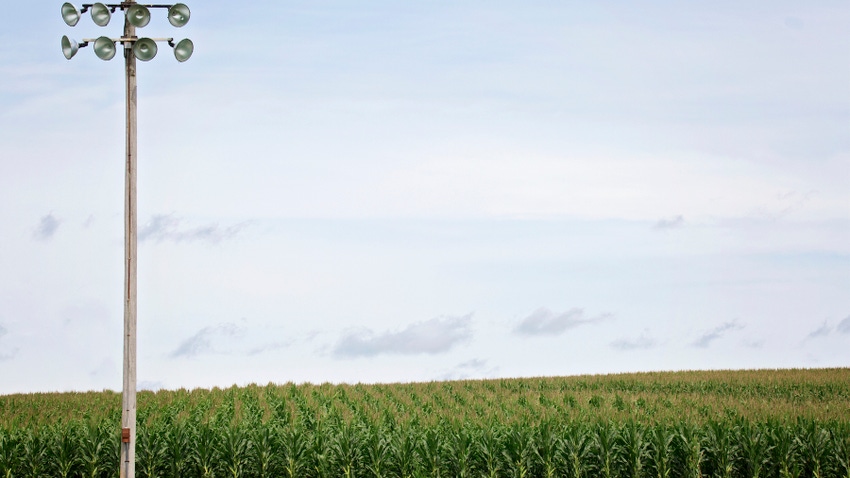
USDA’s Feb. 8 World Agricultural Supply and Demand Estimates will include 30 pages of numbers along with plenty of words outlining the agency’s expectations. Still missing from the official discussion will be projections for 2024 crop corn and soybean acreage, production and prices. Despite this omission, prospects for the coming year are starting to come into focus as the market slowly pivots from one crop year to the next
Market geeks revel in numbers, just like baseball fanatics. It may not be a coincidence that opening day for the Major Leagues is March 28, when USDA releases Prospective Plantings, its much-anticipated survey of farmers’ plans.
Indeed, acreage talk now is the market’s version of spring training. Unlike those practice games, swings in daily futures prices are very much real trading for farmers looking to lock in some new crop protection.
Here’s what Farm Futures' farmer surveys said about 2024 so far.
Aug. 28: 93.1 million acres of corn, 85.4 million soybeans.
Jan. 23: 92.8 million corn, 85 million soybeans.
Both surveys showed less corn and more soybeans than USDA reported last year:
USDA 2023: 94.6 million acres of corn, 83.6 million soybeans.
The government has not been completely silent about 2024. Its initial “baseline” estimate for 2024, issued in November showed the same trends as Farm Futures, but even more so.
USDA Baseline: 91 million acres of corn, 87 million soybeans.
This baseline will be updated Feb. 15-16 at the annual Agriculture Outlook Forum. Unlike USDA Prospective Plantings and Farm Futures, these multi-year forecasts are statistical projections that lack survey data. But the baselines include a vital element the surveys lack: projections for production, supply and demand, and prices.
Supply and demand tables in the first baseline were based on then-current 2023 ending stocks from the October WASDE. Old crop carryout is important for new crop because it’s the starting point for 2024 supplies, which also include production and imports. So, the Feb.8 WASDE will influence 2024 prospects, at least indirectly.
Estimates of both corn and soybean 2023 crops went up from October to January, and projections of how much will be left over at the end of the marketing years Aug. 31, 2024, also rose. While the corn increase to 2.162 billion bushels was small, only 2.4% or 51 million bushels, soybean carryout jumped 60 million bushels, a whopping 27.5%, bringing the estimate to 280 million.
The Feb. 8 WASDE could change those numbers again depending on what the agency says about usage. Strong exports could whittle away at soybean carryout, the most likely change headed into the data dump, and corn sales are also promising, though not likely to make a huge difference due to large stocks.
Production given yield trends
So where does that leave the potential 2024 supply and demand balance sheet? The line items look like this, using acreage from the Farm Futures survey along with current carryout from the January WASDE, USDA’s expected yields and my own estimates about imports, usage and prices based on historical projections:
Production: 15.36 billion bushels corn, 4.64 billion soybeans.
Usage: 15.10 billion corn, 4.21 billion soybeans
Carryout: 2.44 billion corn, 447 million soybeans
Average Cash Price: $3.23 corn, $10.85 soybeans
USDA Baseline: $4.50 corn, $11.30 soybeans
USDA’s baseline corn yield, assuming average summer weather, translates into an expected yield of 181 bpa, higher than the statistical trend. Using the more conservation trend yield of 178.6 bpa knocks 200 million bushels off production but cuts usage, too, with a modest net reduction of ending stocks to 2.33 billion and an average cash price of $3.42.
USDA’s weather-adjusted yield for soybeans of 52 bpa, however, is close to the statistical trend yield.
Expect price and production swings
What could change? USDA likely will be more optimistic about prices based on current harvest 2024 futures around $4.75 for corn and $11.75 soybeans. Demand normally rises and falls with supplies. Bigger stocks mean lower prices, hence the adage “the cure for low prices is low prices.”
Corn demand typically doesn’t change much year-on-year without sharp price adjustments affecting domestic demand or significant production variations among major producing and exporting countries. Large global supplies of feed reduce potential for big shifts, though the 2024 marketing year is obviously a long way off.
Soybean stocks are more vulnerable to swings, with prices reacting to weather in the United States or South America, along with Chinese consumption. Before the trade war China’s fast-growing economy was the best barometer for its imports. China’s economy may finally be on the verge of turning around after the long Covid slump. But a decline in population, especially among the young, could act as a break on soybean consumption now unless the Communist Party encourages imports to keep its processing industry humming, though a surge in its product exports could hurt the rest of the world’s producers.
Other factors influencing both corn and soybean demand could also come into play, including global economic growth, the value of the U.S. dollar and ongoing wars in Ukraine and the Middle East. A strong dollar tends to deflate commodities, which is why corn, soybeans and crude oil all suffered in the wake of the strong Feb. 2 jobs report. And it’s an election year in the United States, raising the uncertainty because U.S.-China relations are very much a hot-button issue.
It's never easy to predict what USDA will say in its updated expectations for 2024, and gauging whether the market will pay much attention is even more of a guess. With both old crop corn and soybean futures battling to avoid more losses, traders may focus on the here-and-now rather than things to come.
About the Author(s)
You May Also Like






